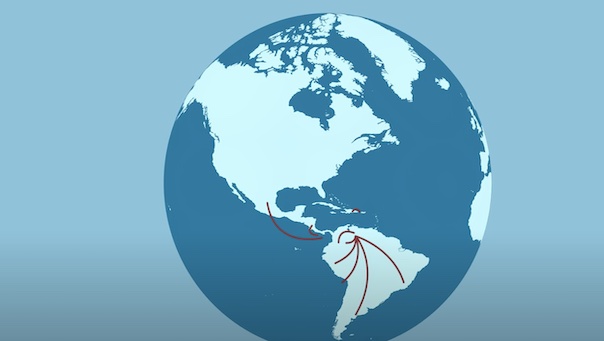Can perceptions towards migration be changed? The effects of life-stories and informative videos on host communities’ perceptions
May 11, 2023

The use of videos has a positive, short-term impact on people's perception towards migration and contributes to breaking down prejudices associated with migrants.
Latin America and the Caribbean went from hosting 7 million migrants in 1990 to having a migrant population of almost 15 million in 2020. Although sudden and massive migration flows can represent a challenge for governments and host communities, migration also represents an opportunity for development as it promotes more diverse, productive, and innovative societies.
For this to happen, however, integration is essential. One of the main obstacles comes from negative perceptions towards migrants, discrimination, and xenophobia. In order to understand how these feelings can be changed and how people's attitudes about migration in host communities can be improved, the Inter-American Development Bank (IDB) and the United Nations Development Program (UNDP) conducted a research in 9 Latin American and Caribbean countries.
Over the course of 3 months, nearly 22,000 people from Barbados, Chile, Costa Rica, Colombia, Ecuador, Mexico, Peru, the Dominican Republic, and Trinidad and Tobago were invited to complete a survey. Following this, they were randomly assigned to watch one of two types of videos, whether emotional or informative. Finally, the participants completed a new survey, and the results were compared. The experiment allows to understand the impact of the different types of videos on people's perception towards migration.
The conclusion is crystal clear: the use of videos has a positive, short-term impact on people's perception towards migration and contributes to breaking down prejudices associated with migrants. Knowing more about the history of migrants through videos affects the perception of host communities in several dimensions: the willingness to live nearby, the representations regarding their impact on the labor market, the contribution of their culture, and the effects of migration on citizen security.
Regarding the first, the levels of acceptance of the presence of migrants in the host country, in the neighborhood and as part of the close family, improves after watching the videos. Likewise, the willingness to trust migrants increases. Although a high proportion of the population is already in favor the provision of humanitarian aid and health and education services to immigrants, the two videos are equally effective in increasing this willingness.
Although most of the participants think migrants contribute to the economy and thus should be granted work permits, many feel they increase competition in the labor market and consider them a burden for the State. At this point, both videos are particularly effective in changing perceptions, particularly among the lower-income population. The videos are also effective in increasing the proportion of people who perceive the benefits of the arrival of migrants and their contributions to ideas and cultures. In this case, the informational video is as effective as or more effective than the emotional video in changing the perceptions of the local population. Particularly, in Colombia and Mexico, the informative video has outstanding effects.
Lastly, the provision of information on immigration is effective in changing perceptions towards insecurity and crime. Although reducing the stigma around migrants with these interventions is more difficult, the emotional video is more effective for this purpose. Both videos are particularly powerful in changing the perceptions of less educated people.
Summarizing, this experiment shows that the use of emotional and informative videos can be a cost-effective measure to address the prejudices that arise from massive migratory flows, thus allowing the countries of the region to take full advantage of the cultural richness and contribution that migrants can bring.
It is important to note that the effects of the videos may vary depending on the local population and their context. Therefore, it is important to tailor the messages and communication strategy to the specific needs and concerns of each community. In this way, the effectiveness of efforts to raise awareness and promote a broader and more positive understanding of migrants and their contribution to society can be increased.

 Locations
Locations

